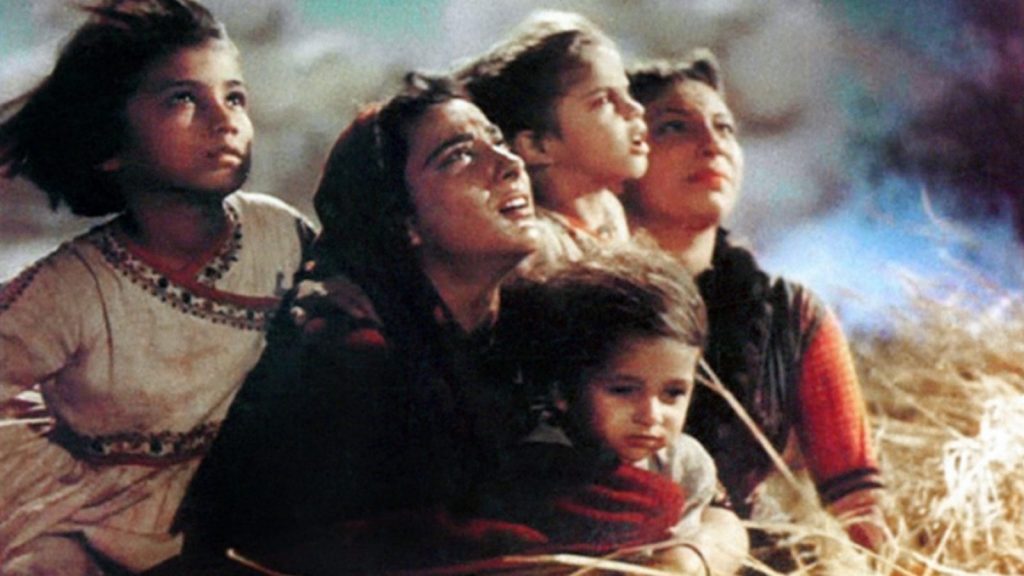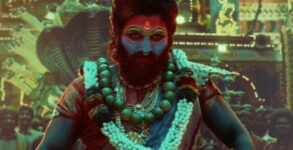Misogyny has been deep-rooted in Bollywood since the advent of cinema. What has been discussed right now, the problematic portrayal of women, has existed since a long time. The gender disparity and wage-gap has existed since the early 1940s and 50 when cinema started being popular. The actresses were always given the roles of demure subdued women who had to be rescued from a big bad villain by the dashing actor. Very rarely did we see films with strong women characters.
The women who broke the shackles back then were actresses such as Meena Kumari, who has played the roles of a courtesan and drunkard and a woman with an extra-marital affair. Nargis Dutt herself, took on the role of ‘Mother India’ and shot her son at a time when mothers onscreen embodied nurturing and sacrificial roles.
The 1960s were all about colour, glamour and glitz and women wore bright colours and sported unique hairdos on the screens? But their roles remained to that of pretty women on the screen running after men or competing with other women to get a ‘man’. The 1970s are also notorious for making a number of films which had raped scenes. Raj Kapoor, may have led a controversial life, but in his films he showed women in great light. He was a filmmaker who was light years ahead of his time, sadly his personal life was jaded. He was perhaps the rare filmmakers who captured the life and woes of a common perfectly on celluloid. Most of the rape scenes were cringeworthy and grotesque, but they became a matter of selling point for most filmmakers. The villains were larger than life and for them to get back at the hero meant to kidnap and rape either the sisters or the wives or the girlfriends. The 1980s were one of the most golden eras for Bollywood. With actresses such as Shabana Azmi, Smita Patil, Rekha, Sridevi, Zeenat Aman, Parveen Babi taking on the big actors, it seemed like a fresh air of breath for the films.
Aasha, a Reena Roy film released the same time as Amitabh Bachchan’s Shaan, yet the movie was a bigger hit and a bigger blockbuster than Shaan.
The 1980s saw plenty of progressive cinema from the NSD stable. Manthan, Mirch Masala, Ardh Satya, Jaane Bhi Do Yaaro saw women take on progressive roles which were neither that of demure damsels nor beauty props. The 90s was when the true descent began for the portrayal of women in Bollywood. Madhuri Dixit who was clearly uncomfortable filming a rape scene, had to undergo it as she had no clue if it was okay to protest against it. The 90s saw men in macho and police roles, parading their toxic masculinity where their savior complexes were on a high. Women again were pitted against each other to win the ‘man’. Songs were laced with double meaning lyrics, women were sexualized in almost every movie and unrealistic beauty standards were set in society by the film and beauty glossies. The actresses were perfect with their orthodontic smiles, manicured fingernails and 22- inch waists. The actors had washboard flat abs and the actresses apart from few songs and romance sequences didn’t have a lot to do in movies. The actresses were replaced by Miss Indias and models, a trend that was carry forward even in the new millennium. The 90s also saw the birth of the ‘Superstars’ that made the actresses fade into oblivion. The three notable films to come out in the 90s were Fire, Kamasutra and Bandit Queen. Each movie saw women in formidable positions and they all courted controversies over the nudity and portrayal of homosexuality on the Indian screen.
Hrithik Roshan opens up on sexual harassment allegation against Vikas Bahl
However, Arundhati Roy had written a critique of the Shekhar Kapur directorial ‘Bandit Queen’, where she slammed him for using the rape scenes to promote his film and making Phoolan Devi’s life all about rape.
With the new millennium seeping in, actresses were replaced by models and beauty queens. They barely had any meaty roles. The jokes and punchlines became crass and misogynist. Stalking was the new form of expressing love. Item songs replaced genuine melodious music and soul-touching lyrics, Behaving like a maniac meant the actor showered true love on the actress, thereby setting dangerous forms of social control. Movie are a powerful medium, as they are viewed by millions and in a way they reflect the society we live in. Which is why the portrayal of women in Bollywood is a mirror of our patriarchal society. The industry is ruled by men and for men. Women continue to be props. Why just actresses? How many women technicians do we know? How many editors, music composers, lyricists are women? Who remembers Jaddan Bai as a music composer and not the mother of actress Nargis.
Usha Khanna, herself was a celebrated music composer, yet her name is lost in the pages of history. Till a few years back women were not allowed to be make-up artists. It took the decision of the Bombay High Court to decide on women to work as make-up artists, who were previously allowed to be only hairstylists on film sets. That was also a field ruled by men. Today, most of the films we see have a toxic overflow of masculinity on display. The chiseled abs and perfect jawlines of actors are to fool no one.
Bhumi Pednekar and Alankrita Shrivastava to team up for a dark comedy
The women like Vidya Balan, Rani Mukerji, Kangana Ranaut have to make their own films and be cast opposite lesser known actors for their films to work. The 3 big Khans are too big to be cast, opposite actresses. They too, prefer to work with the younger generation or actresses who are yet to get a foothold in the film industry. People talk about box-office numbers, but have we created an atmosphere where people would readily walk in movies to see actresses as the main protagonists. Veere Di Wedding, Lipstick Under My Burkha, took care of the numbers, but they too had the backing of big studios.
In the past two years, many masala films haven’t worked. Big studios, big names haven’t guaranteed a film’s success. The audiences have proved that rancid crap will not work. If a film has good content, it will attract audiences.
Disclaimer: The opinions expressed in this article are the personal opinions of the author.


















